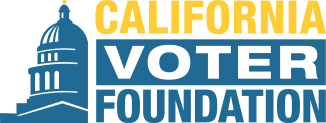Excerpts:
Citing public health concerns over millions of Californians showing up at voting locations this fall, Gov. Gavin Newsom on Friday ordered ballots to be mailed to the state’s 20.6 million voters for the November election while insisting there will need to also be new rules for anyone who participates in person.
The decision makes California the first state in the nation to temporarily shift to all-mail voting as a result of the COVID-19 pandemic — prompted, Newsom said, by the likelihood that public health conditions will not have improved to a level at which millions of people could show up on a single day to cast a ballot.
“There’s a lot of excitement around this November’s election in terms of making sure that you can conduct yourself in a safe way, and make sure your health is protected,” Newsom said during a midday event.
The decision to radically rethink the November election comes after a series of urgent requests and proposals made by lawmakers and local elections officials alike. Since the beginning of the coronavirus, health concerns have been raised in several states that have conducted in-person voting with turnout in November expected to be high.
- - - - - - - - -
“Elections have been an unfunded mandate and this is going to be an even bigger expense for counties,” said Kim Alexander, president of the nonprofit California Voter Foundation.
Legislators had introduced bills to require ballots mailed to all voters prior to Newsom’s action on Friday. His decision to impose the change by executive order expedites the effort by state and local officials. But his directive leaves a key question unanswered: What provisions will be made for voters who still want or need to vote in person?
Advocates for disabled voters and communities of color say the state will need to maintain a robust set of options for those who want to vote in person in the days leading up to the election as well as on election day.
“Reductions to in-person voting raise very real concerns for disenfranchisement, particularly for communities that already face barriers to voting, such as voters with limited-English proficiency, voters with disabilities, and voters who are underrepresented and rely on in-person voting at higher rates, Latino, and young voters,” Raúl Macías, an attorney for the Brennan Center for Justice at NYU School of Law, wrote in a letter to Newsom last month.
Newsom’s executive order doesn’t lay out a specific set of rules for in-person voting, but urges state officials to craft a plan by the end of this month.
Holland said it’s important for counties to have as much flexibility as possible, given the possibility that new outbreaks in coronavirus cases could develop in the final weeks leading up to the election. “We really don’t need the Legislature telling us there’s a strict formula, when we may not be able to meet it,” he said.
Assemblyman Marc Berman (D-Palo Alto), who wrote a recently introduced bill to mail a ballot to every voter, said state officials should work closely to address those concerns. But he said he’s “not comfortable” with too loose of a statewide standard.
“I think that we can create a plan for the November election to provide flexibility,” Berman said. “Counties, though, will need to show us that they tried their best to achieve it” before considering case-by-case issues.
Newsom said Friday that in-person voting options will remain an important part of the November election.
“We still want to have the appropriate number of physical sites for people to vote as well,” he said.
Five states have permanent all-mail elections. While California’s change would only be for November, the state is relatively well prepared to implement Newsom’s directive. California has had generous rules for absentee voting since 2002, allowing voters to opt for permanent voting by mail regardless of the reason.
Remote voting was a key component of the March statewide primary, during which 72% of all ballots were cast by mail — a record high. But a number of counties had much lower absentee voting records, meaning the change will take considerable work to implement.
The cost of mailing everyone a ballot could also be daunting, and locals have often complained that the state has expanded access to voting while not providing sufficient funds for the counties to do the work. And because voter turnout is traditionally higher in general elections, a temporary shift to all-mail voting could create significant new challenges in funding and logistics.
Alexander said that expanding absentee voting should include a robust effort to encourage voters not to rely on putting their ballots in the mail. She said a leading reason a ballot isn’t counted is that it arrives at a local elections office with a postmark after election day.
“The best way to return them is a [local] drop-off box or in person. It’s not by mail,” she said. (full story)

